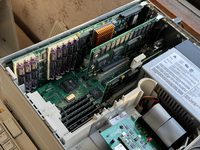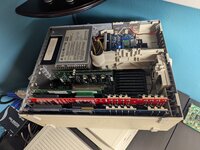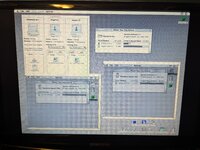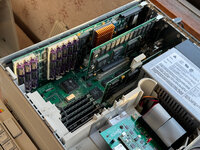Another piece of information I will relay from the printed AOL archives that came with my Rocket:
I've searched on and off for years to locate RocketWare 1.5.1 or PhotoBooster 1.1.1,but have never managed to discover either. So if you are one of those 414 people who downloaded "RocketWare 1.5.1 Patch.sit" back in the day, could you share the file? Please? 
EDIT!
Well imagine that! Thanks to @slomacuser, the archive he pointed to above actually contains PhotoBooster 1.1.1 !!!! And inside that archive, is the Rocketware 1.5.1 patch! Hell yeah! Thanks again @slomacuser! What a time to be alive!
Subj: RocketWare 1.5.1 Patch February 18, 1995
From: RadiusTS
File: RocketWare 1.5.1 Patch.sit (21039 bytes)
DL time (14400 baud): < 1 minute
Download count: 414
AUTHOR: Radius, Inc.
EQUIPMENT: Radius Rocket w/RocketWare 1.5
NEEDS: Rocket w/RocketWare 1.5
Previously available as part of the PhotoBooster 1.1.1 software archive, this patcher has been uploaded separately for the sake of any customers who can benefit from the changes listed below but who do not own a PhotoBooster.
The primary features incorporated into this patch are a fix for an A/ROSE INIT problem and faster floppy mounting. The A/ROSE fix allows the Rocket to work with Token Ring cards and certain Ethernet cards that had not been supported before. In full, this patch, which is to be applied ONLY to RocketWare 1.5:
* Makes RAM physically and logically contiguous;
* Fixes an A/ROSE INIT problem with LockMemory;
* Fixes AppleTalk 58 Network Control Panel; and
* Fixes slow floppy mounting with high density diskettes.
This patcher will not make the Rocket compatible with System 7.5 or do anything beyond what is listed above.
===============
Confirmed virus-free with Disinfectant 3.5; "1.5.1" because you can never have too many decimals.
2/18/96. America Online: StevenBros
I've searched on and off for years to locate RocketWare 1.5.1 or PhotoBooster 1.1.1,
EDIT!
Well imagine that! Thanks to @slomacuser, the archive he pointed to above actually contains PhotoBooster 1.1.1 !!!! And inside that archive, is the Rocketware 1.5.1 patch! Hell yeah! Thanks again @slomacuser! What a time to be alive!
Last edited:






